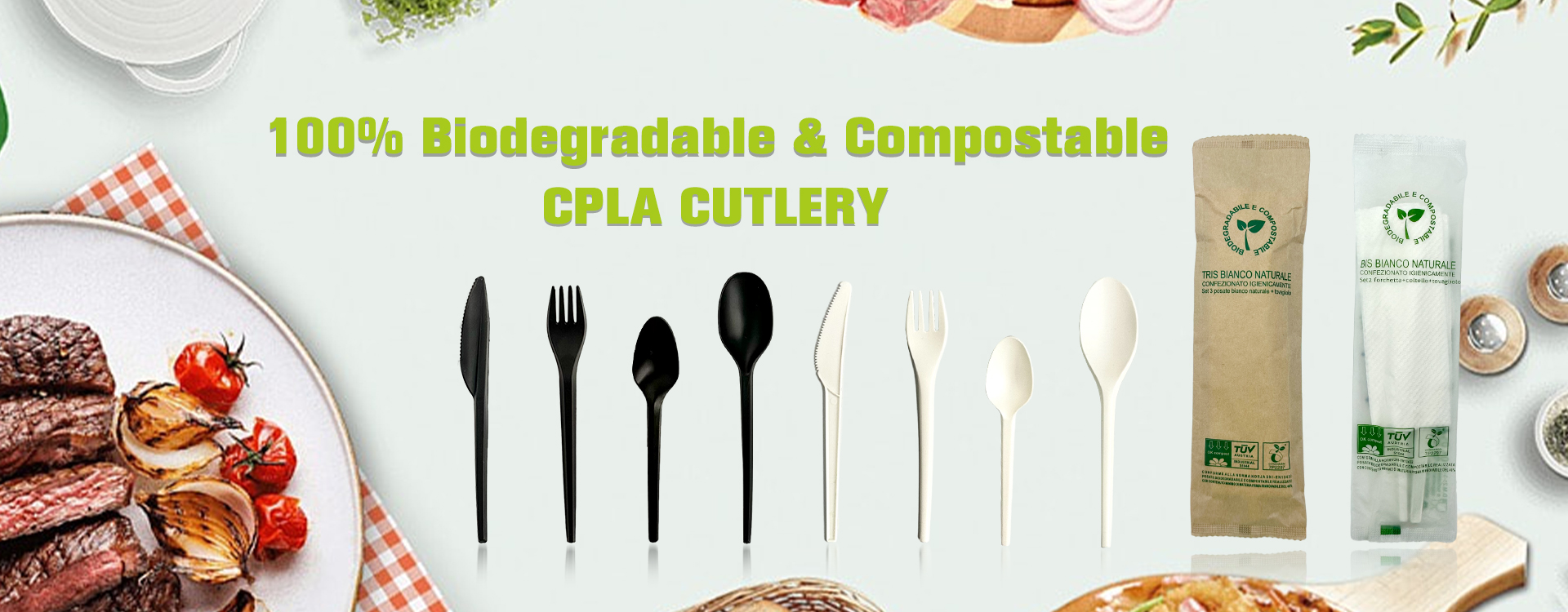Disposable cutlery has become indispensable in our daily routines, from fast-food eateries to home gatherings. However, the environmental repercussions of traditional plastic cutlery are concerning. It's crucial to transition to biodegradable disposable cutlery to mitigate these impacts.
Conventional plastic cutlery is non-biodegradable, resulting in decomposition periods spanning hundreds of years. This accumulation of plastic waste in landfills and oceans poses significant environmental challenges. Moreover, the production of traditional plastic cutlery generates greenhouse gas emissions, exacerbating ecological concerns.
This is where biodegradable disposable cutlery emerges as a sustainable and environmentally friendly option. In this article, we'll delve into the advantages of biodegradable disposable cutlery and its role in mitigating environmental impact.

Biodegradable disposable cutlery is crafted from materials that naturally break down with the assistance of microorganisms. These materials encompass cornstarch, bamboo, and sugarcane fiber. Unlike conventional plastic cutlery, biodegradable cutlery poses no harm to the environment as it decomposes swiftly.
The primary advantage of biodegradable disposable cutlery is its eco-friendliness. Traditional plastic cutlery can take hundreds of years to decompose, posing environmental hazards. In contrast, biodegradable cutlery degrades much faster without releasing harmful chemicals into the atmosphere.
Biodegradable disposable cutlery is a sustainable choice as it's made from renewable resources. For instance, cornstarch is a renewable resource that can be cultivated and harvested annually. This ensures that biodegradable cutlery doesn't contribute to deforestation or other environmental issues.
Biodegradable disposable cutlery proves cost-effective due to its utilization of inexpensive materials. For instance, bamboo, a fast-growing plant, is readily cultivated, rendering it an affordable option for cutlery production. Furthermore, biodegradable cutlery can be manufactured in large volumes, enhancing its affordability compared to traditional plastic alternatives.
Traditional plastic cutlery can release harmful chemicals into the environment, which can be dangerous for humans and animals. Biodegradable cutlery, on the other hand, is made from natural materials that do not release harmful chemicals. This makes it a healthier option for both humans and animals.
Biodegradable disposable cutlery offers versatility and can be utilized in a multitude of settings. It finds common use in restaurants, events, and households alike. Furthermore, biodegradable cutlery is available in diverse shapes and sizes, making it an excellent choice for any occasion.
The adoption of biodegradable disposable cutlery represents a significant yet impactful measure in environmental conservation. Transitioning to biodegradable cutlery aids in curbing the accumulation of plastic waste in landfills and oceans, addressing a critical environmental concern.
The array of benefits associated with biodegradable cutlery, including its eco-friendliness, sustainability, cost-effectiveness, health benefits for humans and animals, and versatility, positions it as a superior alternative to traditional plastic cutlery. It's imperative to recognize that embracing biodegradable cutlery is not solely an individual decision but a collective commitment to safeguarding the environment.
With an increasing number of individuals opting for eco-friendly choices, we can collectively catalyze positive change and progress towards a more sustainable future. In essence, biodegradable disposable cutlery represents a minor adjustment with profound implications for environmental preservation. It's time to embrace this shift and contribute to the protection of our planet.
Previous: None
Next: What is a PP Lunch Box?
Comments
Please Join Us to post.
0